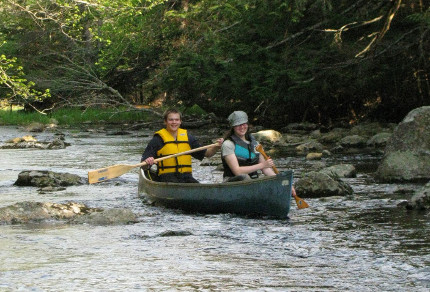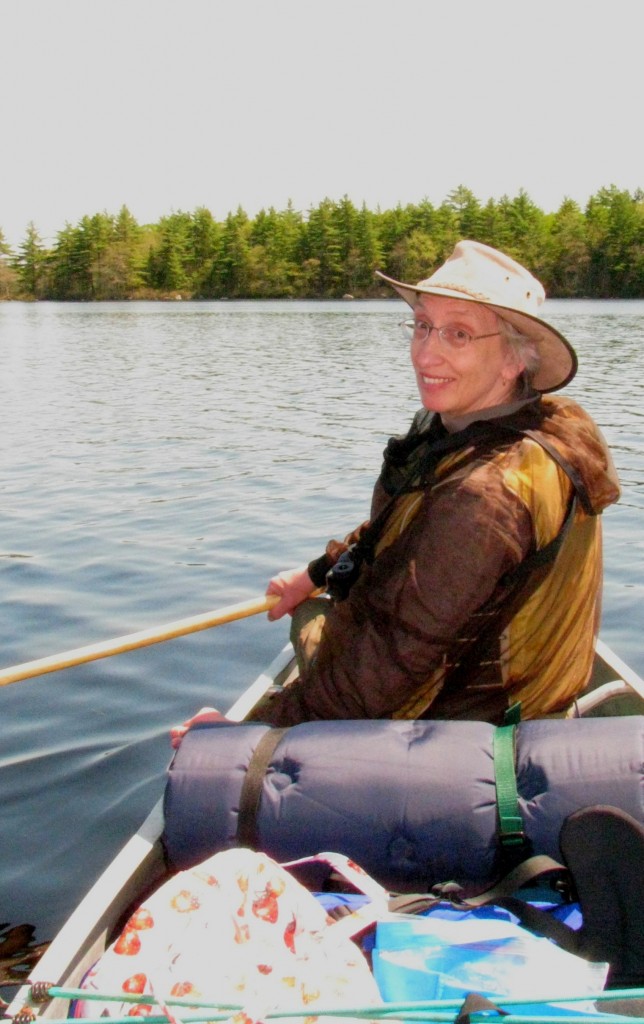
Here I am on Frozen Ocean Lake in Kejimkujik National Park (© Vilis Nams)
Summer heat pours onto Nova Scotia, its scorching breath today aided and abetted by a gusting wind sucking moisture from the land. While my vegetable garden, nourished with periodic drinks from the hose, burgeons into astoundingly large potato plants and blossoming melons and zucchinis, our lawn is patched with dessicated brown.
Two months ago, the landscape wore neon shades of awakening green and flaunted the reds of maple flowers and seeds. During the Victoria Day long weekend in May, I abandoned my gardens and book revisions to accompany Vilis, our son Janis, and three other young adults, Robert, Robyn, and Jason, on a three-day, 30-kilometre canoeing excursion in Kejimkujik National Park.
Located in southwestern Nova Scotia, ‘Keji’ or ‘Kej’ is one of two large Nova Scotian national parks, the other being Cape Breton Highlands National Park on the island of Cape Breton. During the past thirty years, Vilis and I have canoed or hiked Kej’s backcountry as university students, newlyweds, parents of pre-teens, and parents of young men grown tall and strong.
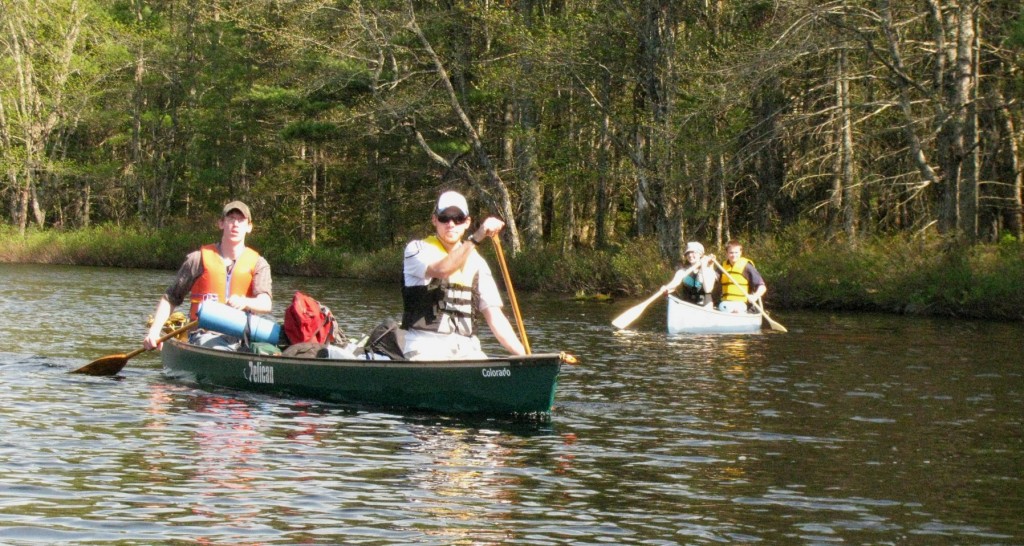
Janis, Jason, Robyn, and Robert on Big Dam Lake (© Magi Nams)
Our 2012 trip, blessed with sunny, mild weather, echoed a loop Vilis and I canoed three decades ago, beginning with a 400-metre portage to Big Dam Lake, after which we headed out into fresh breezes that whipped the lake surface into small waves. We paddled the length of one belly of the lake and through a narrow passage into the second belly, with rocky shores and boreal forest beside us.
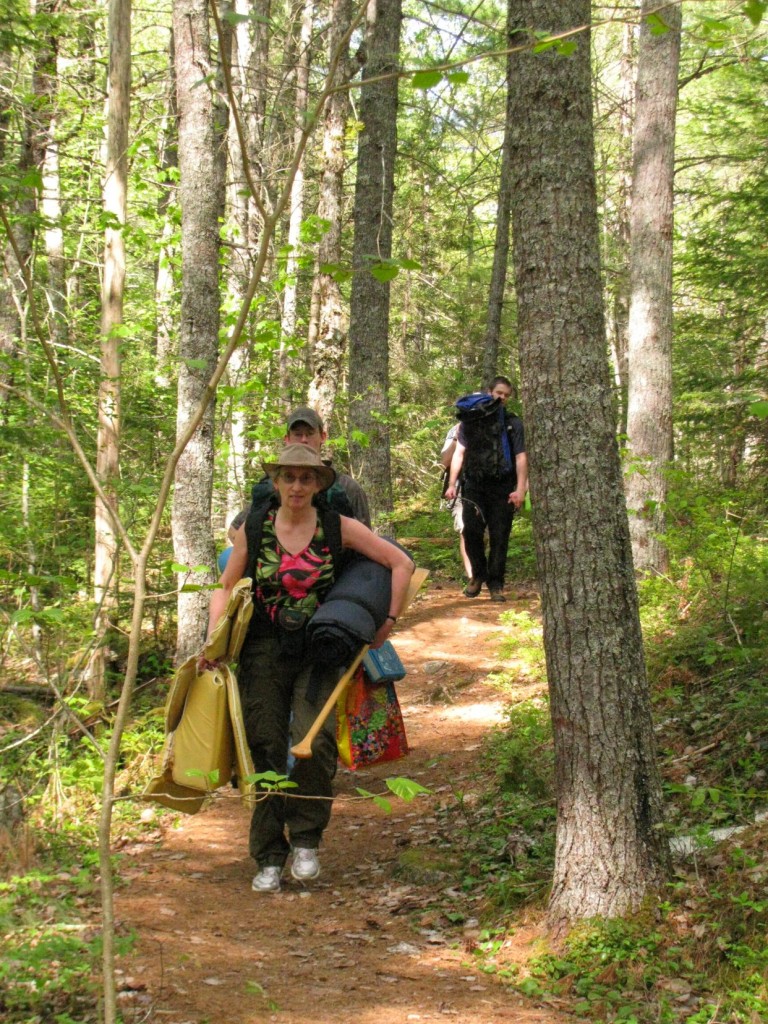
Portaging to Still Brook (© Vilis Nams)
An 800-metre portage through sunlit forest led us to Still Brook, a lazy, swamp-bordered waterway edged with magenta-flowering rhodora and red maples dangling bright red seeds. Painted turtles basking on logs erupted into motion, diving into the brook at our approach.
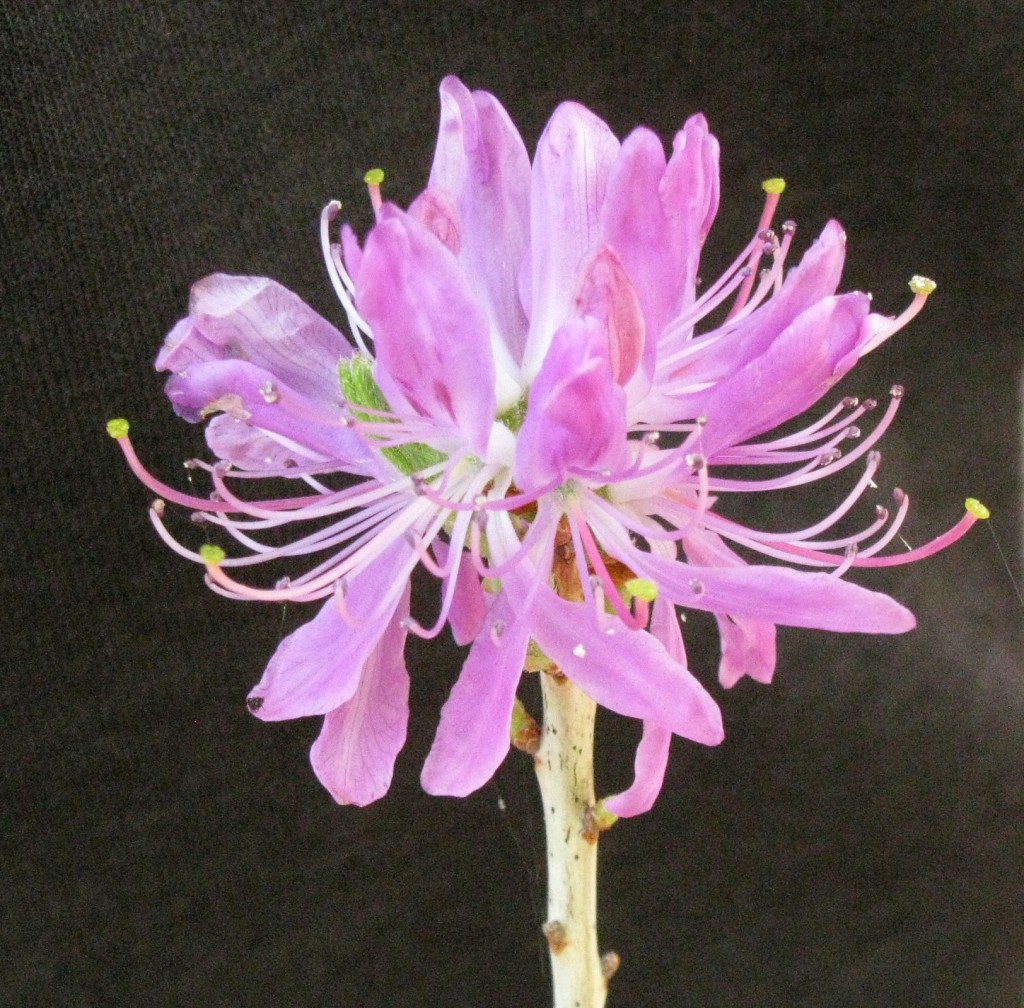
Rhodora canadense (© Magi Nams)
While we paddled and portaged, I chalked up bird songs, hearing black-throated green, black-throated blue, and yellow-rumped warblers, a common yellowthroat, blue-headed vireo, least flycatcher, ovenbird, golden-crowned and ruby-crowned kinglets.

Vilis and Red Maple Seeds (© Magi Nams)
The air smelled of forest and water, of freedom and adventure. On the water, Robyn and Robert cheerfully bailed out their leaky canoe, Janis and Jason powered on ahead, and Vilis and I soaked it all in.
When we reached 160-metre S Portage to Campsite 5 on Frozen Ocean Lake, we unloaded our gear and ran the gentle rapids before hauling our gear to the site beneath tall hemlocks. Vilis cooked sausages over a fire for supper, after which Jason paddled in the evening’s serenity, Robert and Robyn fished, and Janis, Vilis, and I sat and watched firewood coals flaring and crackling in the firebox. Smoke wafted up. Steam rose from a pot of hot water. There was nothing we had to do. Before dark, we strung food-filled packs on high wires between trees to discourage hungry black bears that might pass by. Tucked into my sleeping bag in my tent, I slept amazingly well.
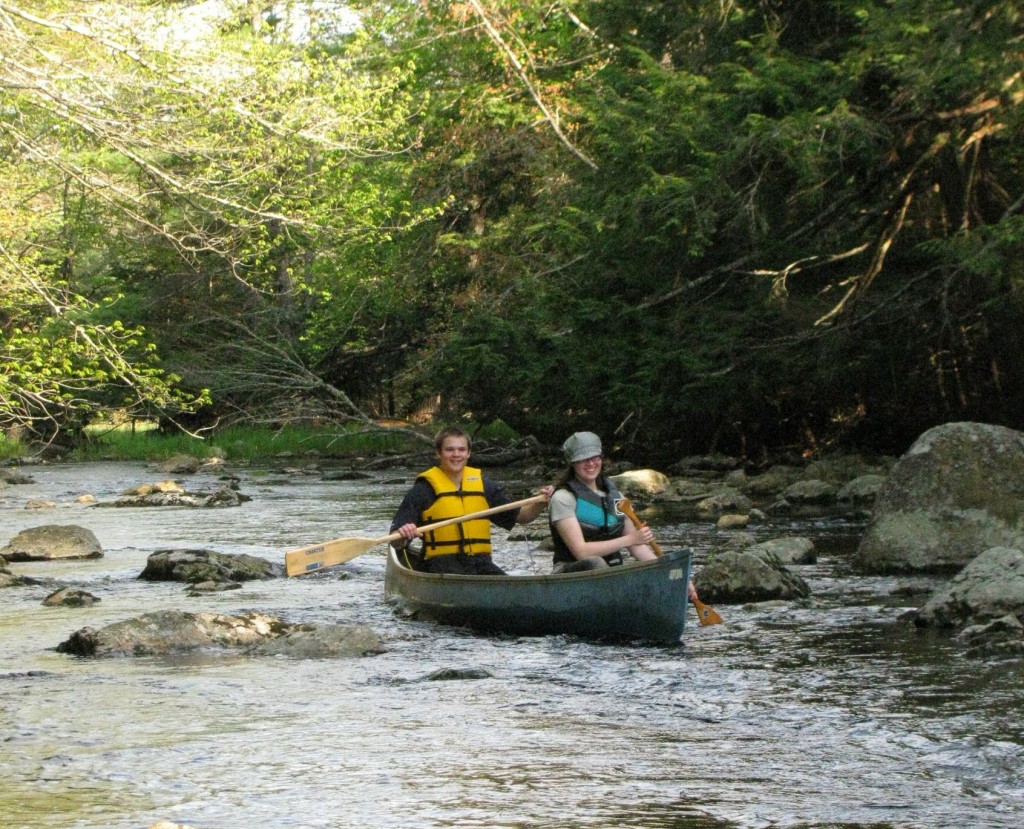
Robert and Robyn navigating S Portage, Kejimkujik National Park (© Magi Nams)
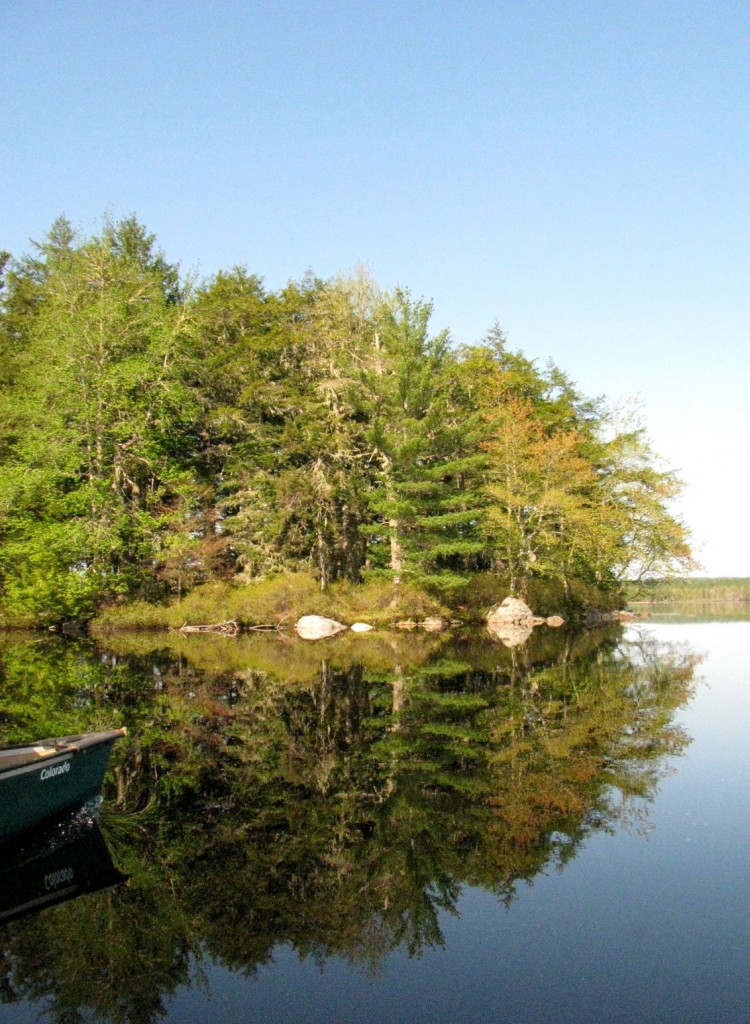
Morning Reflections in Frozen Ocean Lake (© Magi Nams)
On Day 2, I arose to the smell of frying bacon and scrambled eggs, courtesy of Vilis, our camp chef. After breaking camp, we tackled Frozen Ocean Lake, its still water offering stunning reflections and shoreline borders of rhodora. Tree swallows darted over the water, common grackles squeaked out rusty-hinge songs, common mergansers took to flight, and common terns eyed us curiously from huge boulders protruding out of the lake. Black flies harrassed us on a few sections of the lake, but were fewer than I had expected. In still water near a portage boardwalk, a bullfrog stared up, unmoving and unblinking.
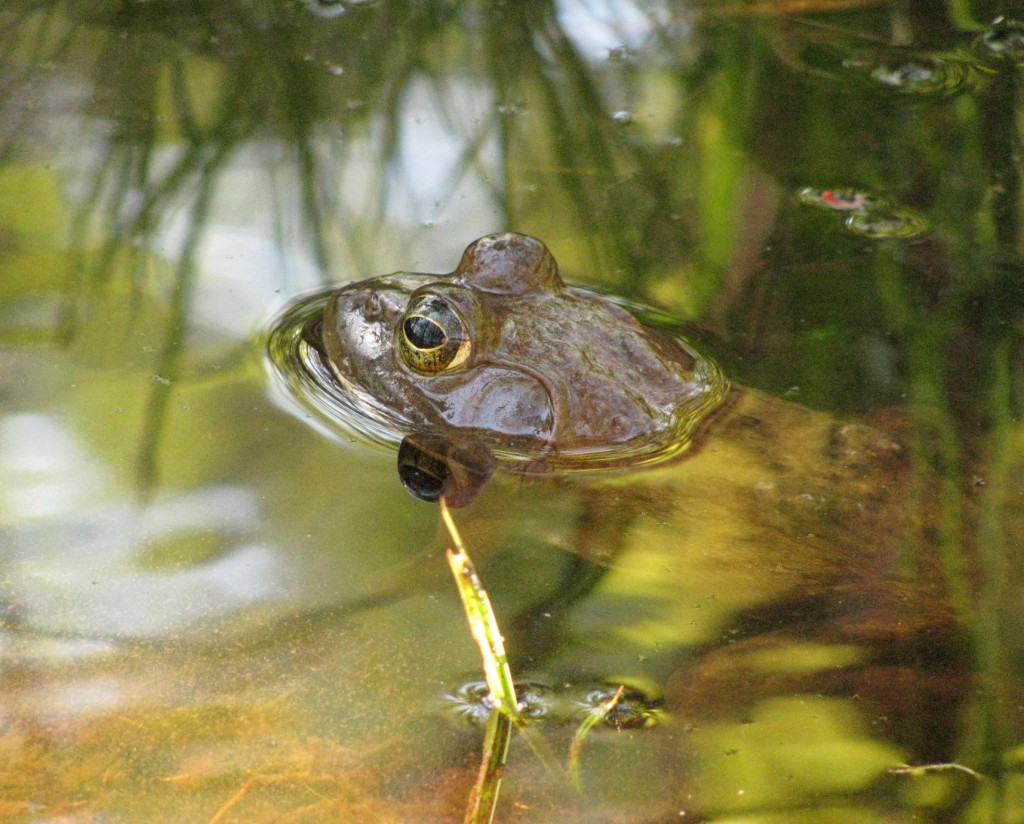
Bullfrog (© Magi Nams)
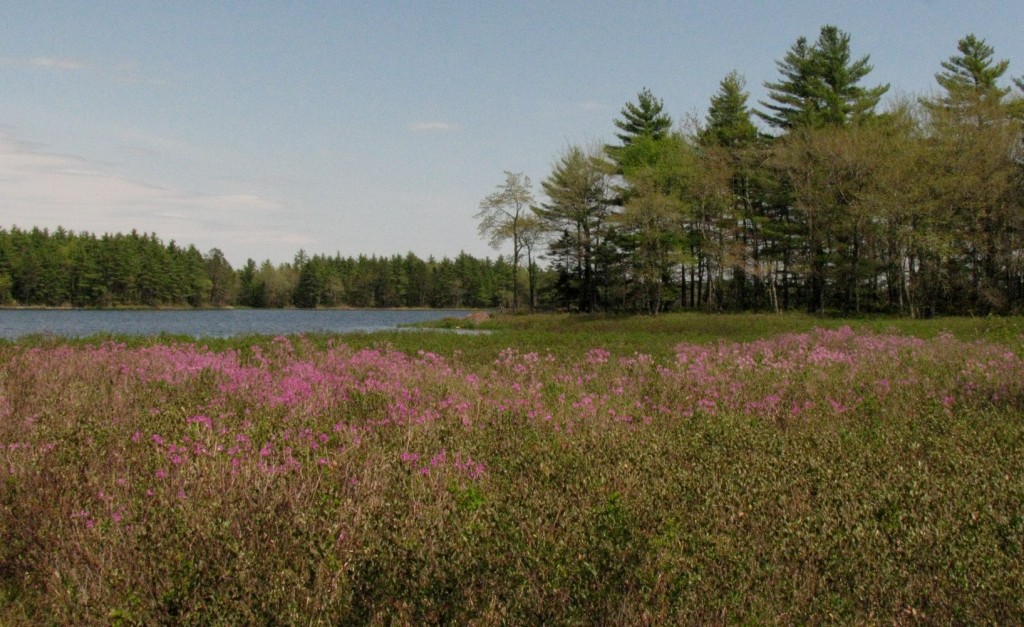
Rhodora, Frozen Ocean Lake, Kejimkujik National Park (© Magi Nams)
We paddled through our first portage of the day, Portage T, the relatively quiet, shallow water rendering the passage a safe one.
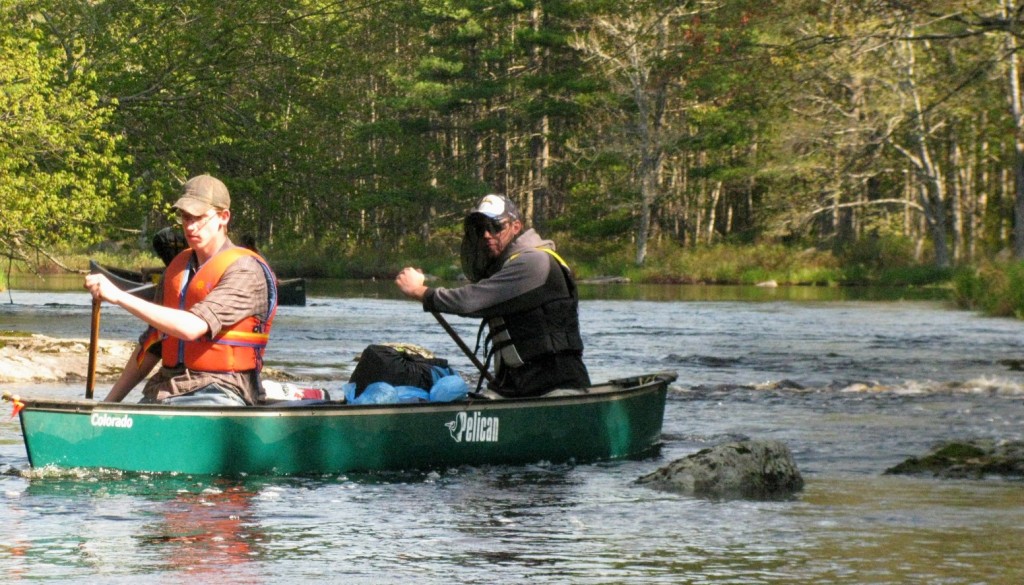
Janis and Jason Paddling through T Portage (©Magi Nams)
The highlight of a long day of paddling that took us into Kejimkujik Lake was running the 330-metre U Portage rapids with empty canoes, our senses alive as we rode fast water between boulders and pried our canoes off a couple of big ones we couldn’t avoid. We managed to avoid capsizing, and the adrenaline rush powered us on through the rest of the morning’s paddle through meandering, quiet Channel Lake Stillwater and Channel Lake.
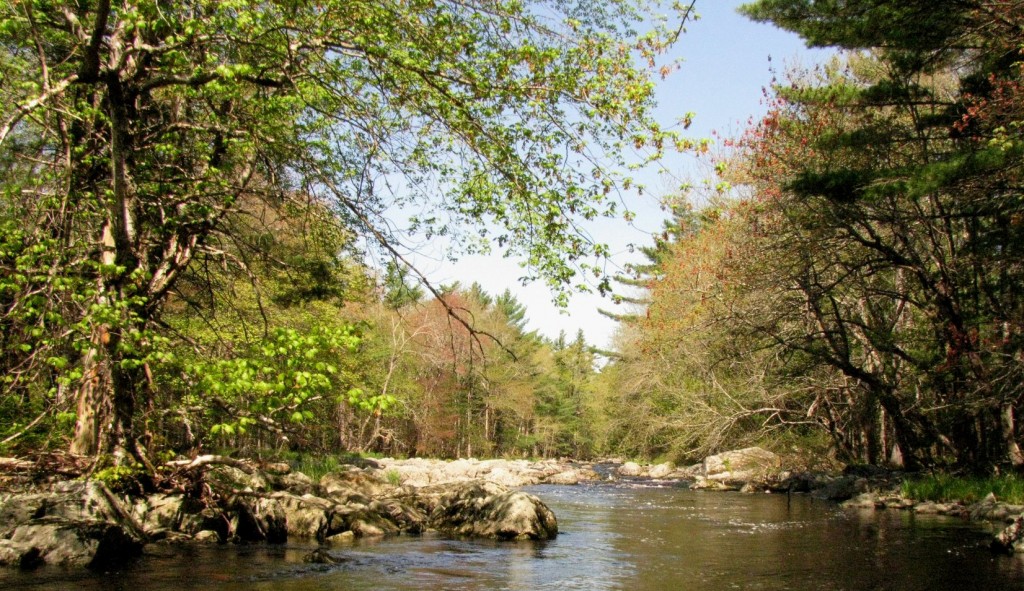
U Portage, Kejimkujik National Park (© Magi Nams)
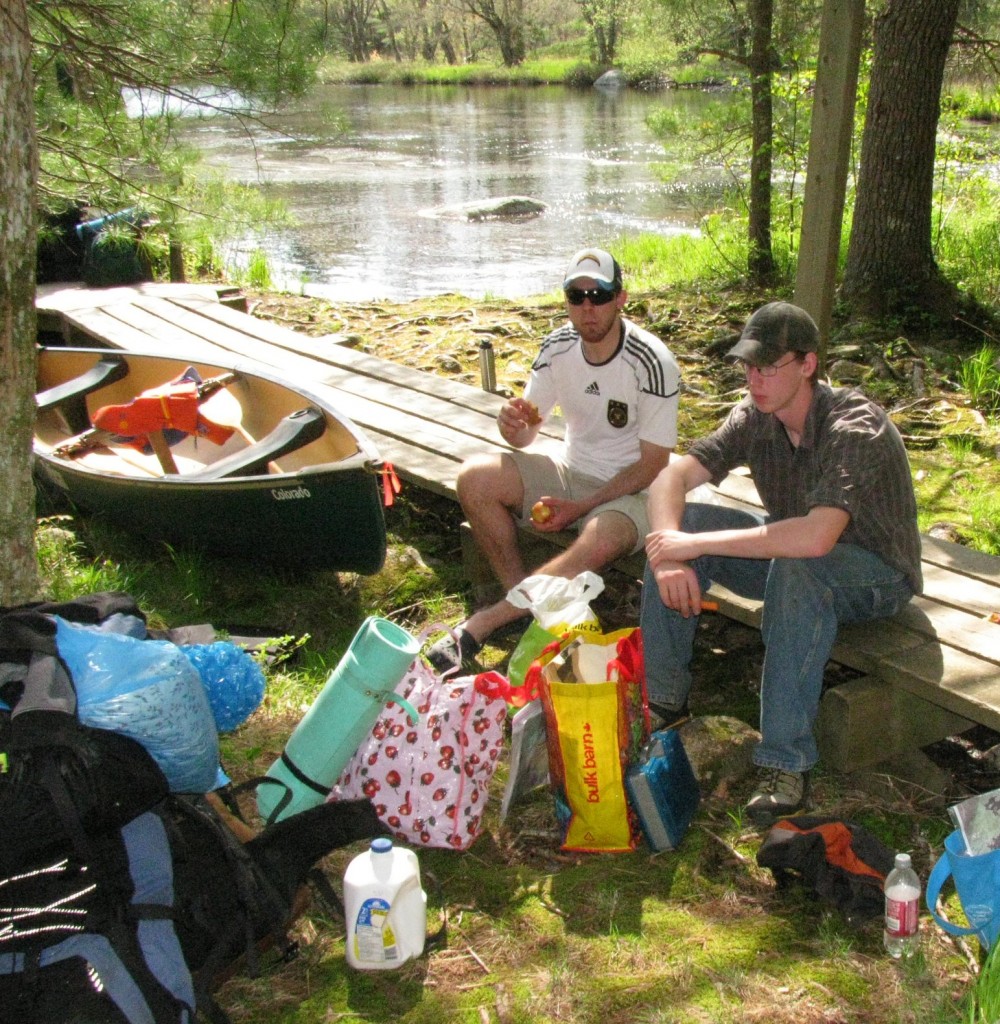
Jason and Janis Lunching after 700-metre V Portage (© Vilis Nams)
A 700-metre portage took us from Channel Lake to Little River, where we lunched on bagels before tackling the river and paddling out into island-studded Kejimkujik Lake. We arrived at Campsite 13 on Ritchie Island in late afternoon, a refreshing breeze chasing away black flies and sun-induced lethargy. Vilis concocted an apple/strawberry-rhubarb cheesecake for dessert (delicious!), and we spent a second evening simply soaking up the beauty of the forest and lake, hearing the haunting cry of a common loon.
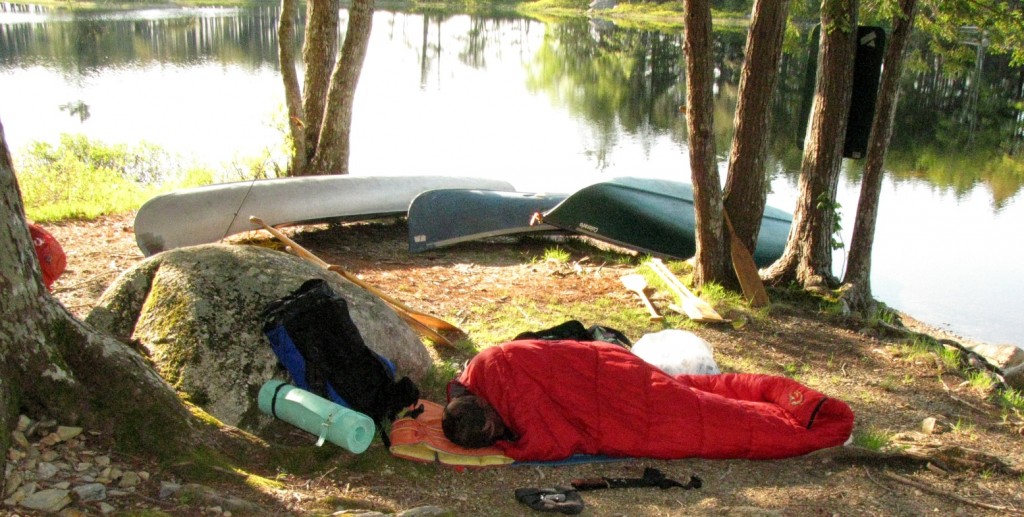
Early Morning and Janis at Campsite 13, Kejimkujik National Park (© Vilis Nams)
Day 3 spilled more sunshine onto us as we broke camp, paddled less than an hour from Ritchie Island to Jake’s Landing, loaded the canoes and camping gear onto and into our vehicles, and headed back to life away from the magical solitude of Kej.

Evening Light on Spring Boreal Forest, Kejimkujik National Park (© Magi Nams)
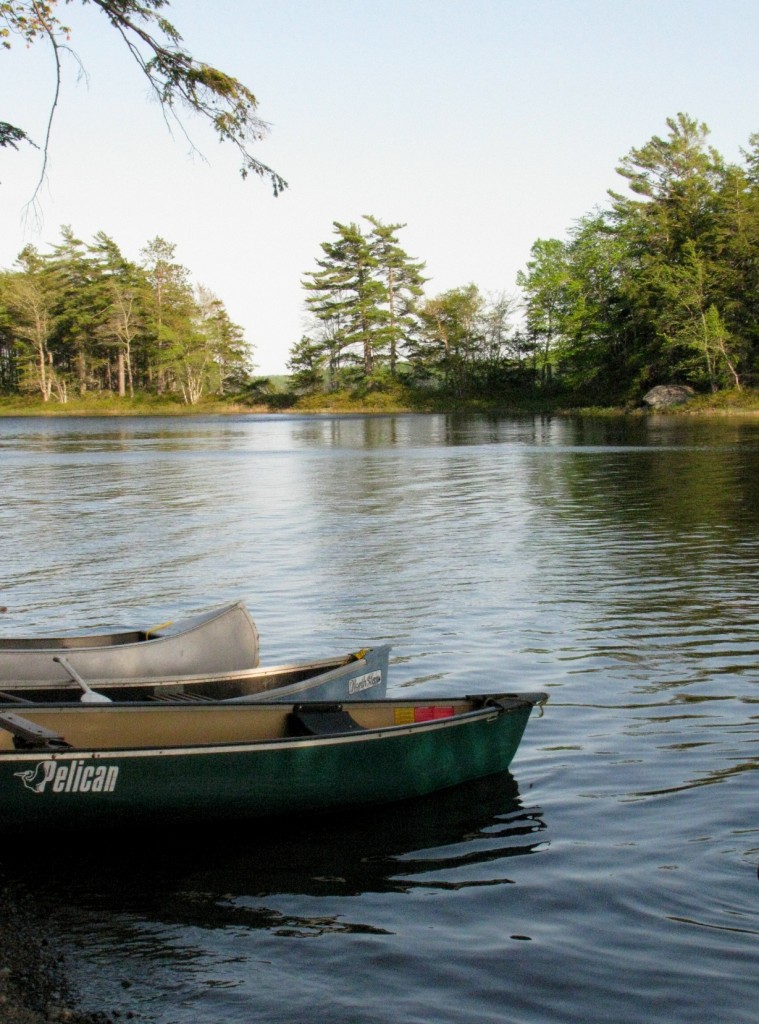
Canoes at Campsite 13, Ritchie Island, Kejimkujik National Park (© Magi Nams)

